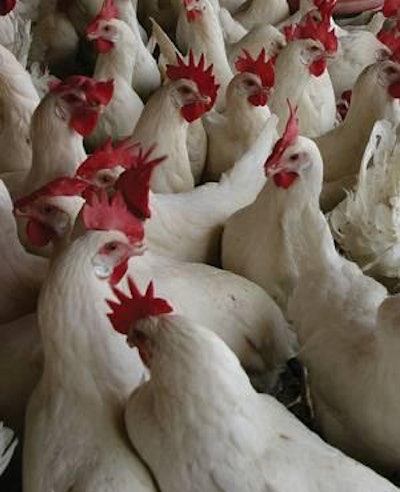
The use of enzyme linked immunosorbent assay, ELISA, has been widely accepted as a useful method to rapidly and economically determine the antibody level in a large number of serum samples. Interpretation of ELISA results requires experience in evaluating data and confidence in the reliability and consistency of data derived from the assay.
Sampling conditions
In order to be truly representative, samples must be collected from individual birds distributed throughout the house, not in just one section. A structured sampling protocol ensures that the samples are representative of the flock. Reproducibility of results among consecutive sampling ages is assured by obtaining blood from the same marked birds. The optimal sample size based on statistical predictions is 23 individual serum specimens per flock.
Assay conditions
The results of the assay must be accurate and valid. In order for an assay to be valid, both positive and negative controls must be within range, including the use of an external reference serum with a known titer as a control. Without reference sera or test controls it is impossible to confirm if abnormal titers are due to incorrect test procedures or actually reflect the antibody status of the flock. Reference controls with a known and specific range using a specific assay should show the same range of values each time the assay is conducted, regardless of the laboratory, personnel, the serial of kits used, provided that a standardized and controlled procedure is followed.
Establishing baselines
The mean titer levels and the coefficient of variation (% CV) values characteristic of specific types and ages of flocks can be derived by storing data and comparing new and historical values. Regular serological monitoring allows users to set up their own baseline standards for expected titer values reflecting vaccination programs for parent and commercial level flocks at predetermined ages. It is most useful to determine titers both before vaccination and then 3-4 weeks thereafter to determine the antibody response.
Interpretation of ELISA serology
The mean titer expresses the average intensity of the antibody response while the %CV indicates the level of uniformity of the antibody response among samples reflecting the immune status following vaccination or challenge. Data reflecting titers and CV values alone are inadequate for complete interpretation of ELISA results. Other inputs are required, including bird type, age, vaccination program and relevant production data in addition to clinical and necropsy findings.
When monitoring the effectiveness of a vaccination program using ELISA assays, the intensity, uniformity and persistency of titers should be evaluated. Titers above normally expected values might indicate a field infection. Low titers suggest improper vaccination procedures or an impaired immune response.
In situations where a proper baseline has not been established and a specific disease is suspected, it is necessary to determine the rise in flock antibody titer over time. Two sets of samples should be assayed from the same flock over a 3-4 week period. The first sample is taken at the onset of clinical signs of the disease (acute phase sera) and the second, 3-4 weeks later (recovery phase sera). A threefold or greater elevation in mean titer with a decreasing CV value in the absence of concurrent vaccination, indicates exposure to a disease.
To facilitate data analysis, BioChek has incorporated the Vaccination Index (VI) in the ELISA software package. The VI compares the ratio between the mean titer and the %CV. After infection or vaccination, the %CV will decrease and the mean titer should increase. The more even the administration of vaccine and the uniformity of the immune response of the flock, the lower will be the %CV and the higher the mean antibody titer. The VI will have a high value with effective vaccination (high mean titer, low %CV) and a low value with inadequate protection induced by vaccination (low mean titer, high %CV). When a vaccinated flock is subsequently exposed to a field infection the mean titer should increase to a higher level and the %CV will decline.
Adapted from a presentation at the 2011 Midwest Poultry Federation Convention

















